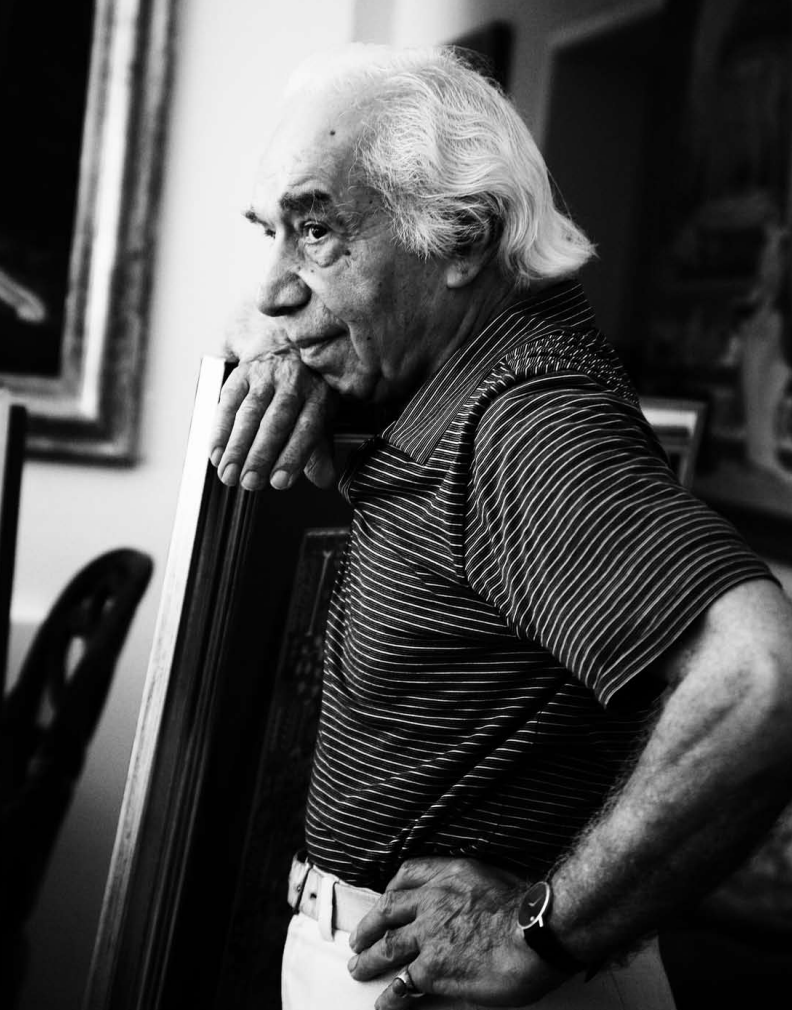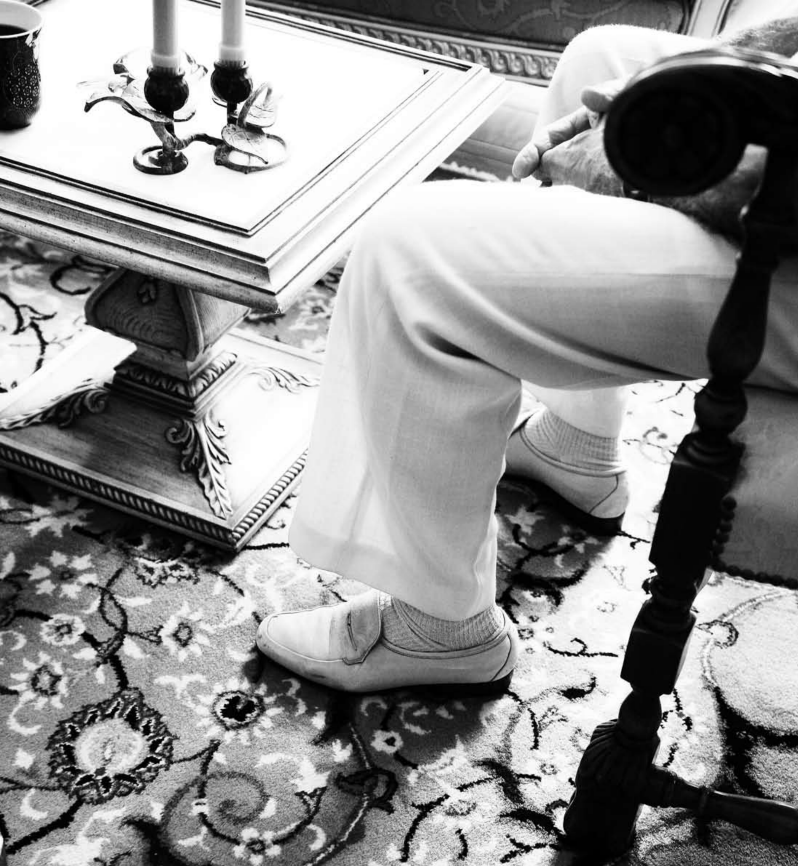Ali Dowlatshahi (b. 1924, Iran) is a distinguished Iranian artist, poet, and activist whose work bridges classical Persian aesthetics and contemporary design. A graduate of the School of Fine Arts in Tehran, he spent 14 years teaching before immigrating to the United States in 1962 with his wife and son. Recognized by the Iranian government for his artistic achievements, Dowlatsahi’s work has been exhibited in the National Museum of Iran in Tehran and in Frankfurt, Germany. One of his books on Persian art was awarded first prize by the Iranian government, and he has been honored multiple times for his role in preserving and advancing Iranian visual traditions.
Dowlatshahi is best known for his technical mastery in traditional Iranian forms, including ghahveh-khaneh painting, Qajar-style portraiture, textile painting, and calligraphy. His work reflects a deep understanding of Persian narrative art, blending richly detailed figuration with symbolic storytelling. His Qajar-inspired compositions channel the elegance and ornate character of 18th- and 19th-century court paintings, while his calligraphic works display a disciplined reverence for the lyrical precision of Persian script. His textile paintings, meanwhile, integrate classical motifs with bold patterning, creating a visual language that honors heritage while speaking to modern sensibilities.
In the United States, Dowlatshahi became an influential figure in textile design. His innovative patterns were featured in Vogue, Textorian, and American Fabric, and have been widely imitated by textile firms around the world. His portraiture earned national recognition, with his paintings of President John F. Kennedy and First Lady Jacqueline Kennedy exhibited in the White House during their administration, and his Kennedy Memorial Portrait permanently housed at the Museum of Natural History. He won first prize out of 1,200 designers in a national competition for Cranston Print Works’ commemorative logo, he was awarded the Key to the City in Daytona for his artistic contributions, and his work has been widely exhibited throughout New York City, including at the United Nations.



